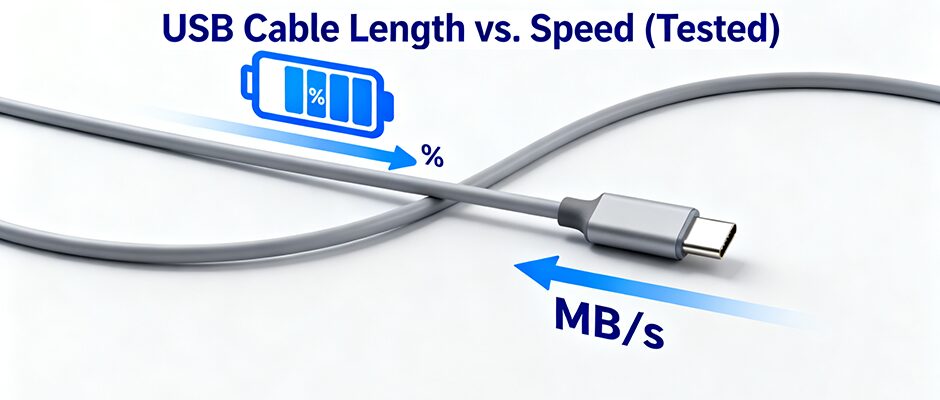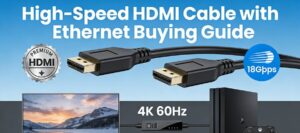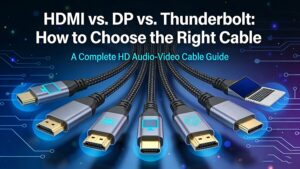Ever wondered why your phone charges slower with a long USB cable or files take forever to transfer? The answer lies in cable length—backed by hard test data and USB industry standards. Let’s break down the key findings.
Key Test Data: Length vs. Performance
Below is a condensed table of real-world performance across common USB versions and lengths (data from industry lab tests and manufacturer specs):
| USB Version | Max Recommended Length | Data Transfer Speed (Short: <1m) | Data Transfer Speed (Long: 3-5m) | Charging Efficiency (Long vs. Short) |
|---|---|---|---|---|
| USB 2.0 | 5m (16.4ft) | 480 Мбит/с | 350-400 Mbps | 85-90% |
| USB 3.0/3.1 | 3m (9.8ft) | 5 Гбит/с | 2-3 Gbps | 80-85% |
| USB 3.2/USB4 | 0.8m (2.6ft) | 20-40 Gbps | 10-15 Gbps (with active cable) | 75-80% (passive cable) |
| USB-C 100W | 1.8m (6.6ft) | 480 Mbps (charging-focused) | 400-450 Mbps | 90% (with eMark chip) |
Why Length Impacts Speed & Charging
Practical Tips for Optimal Performance
Want a customized USB cable length guide tailored to your devices (e.g., smartphone, laptop, camera)? I can create a personalized chart with recommended lengths and product picks—just let me know your device models and use cases!







